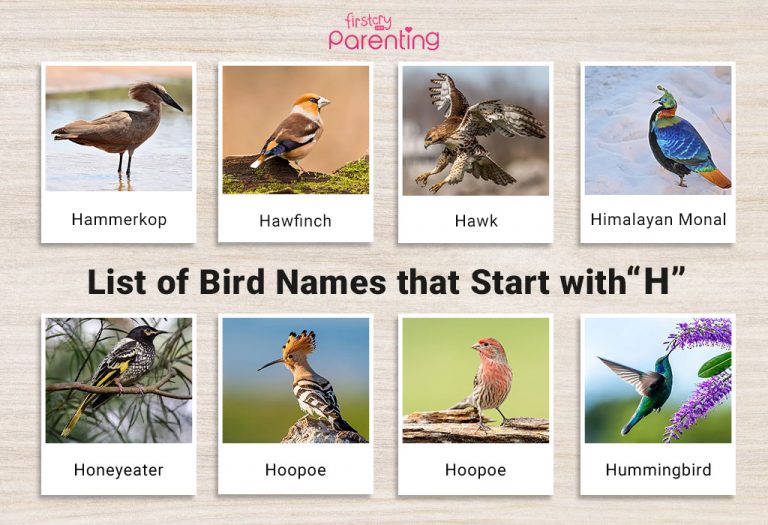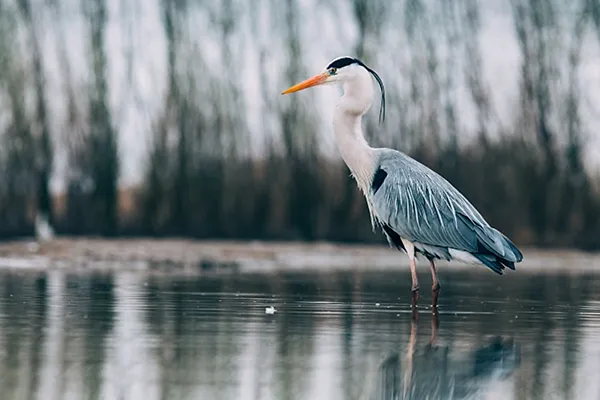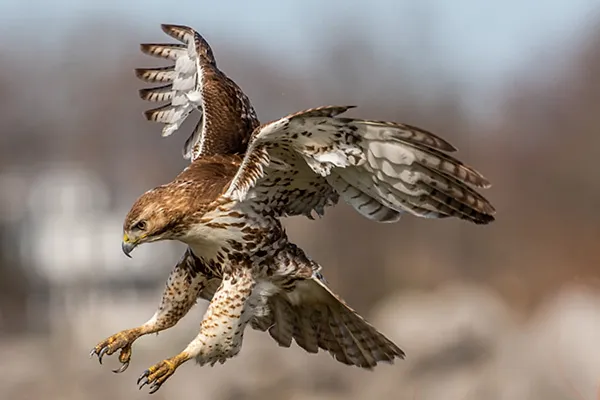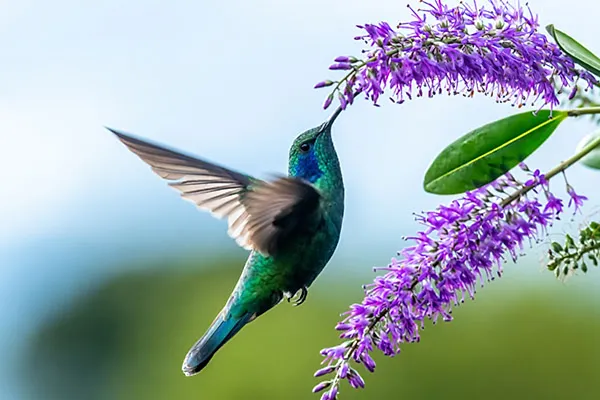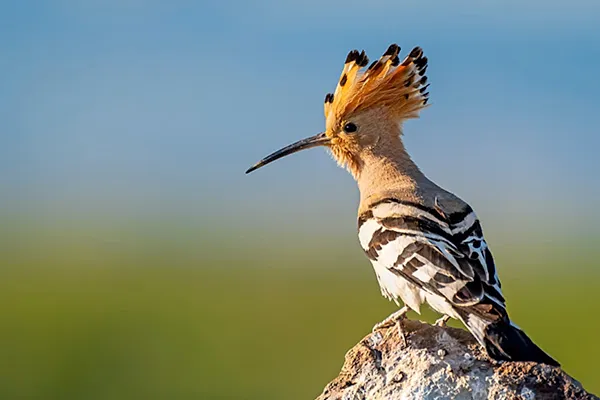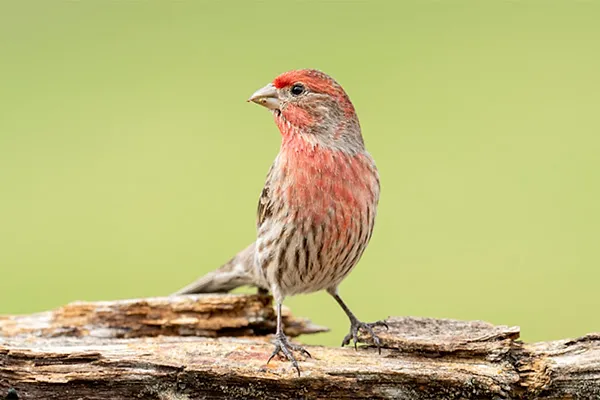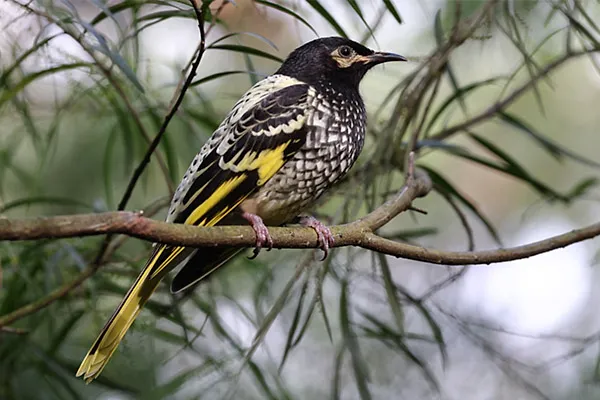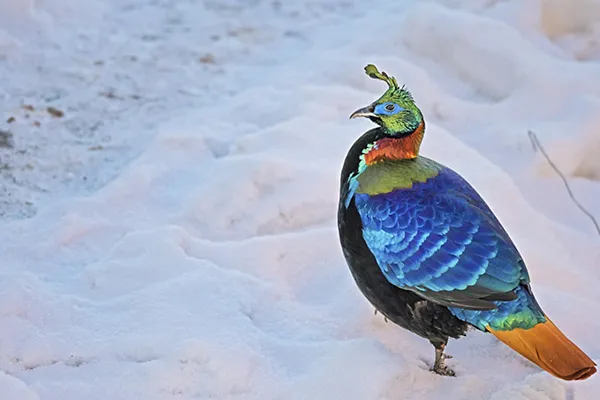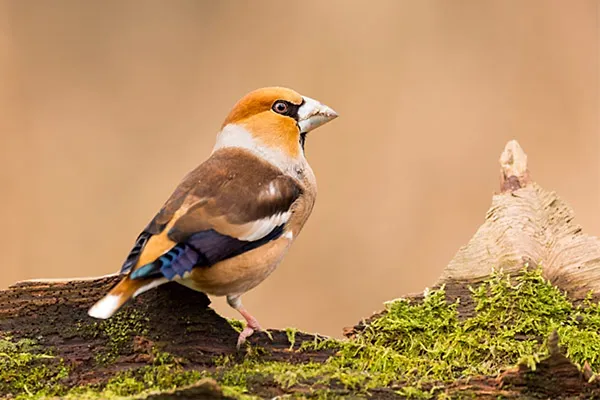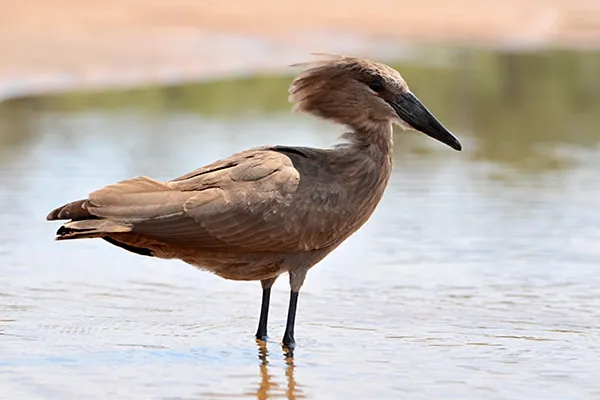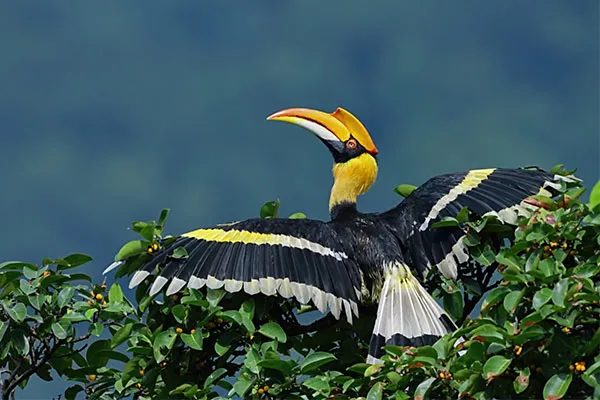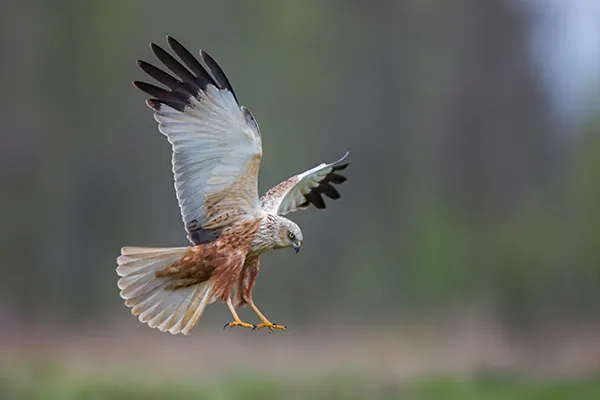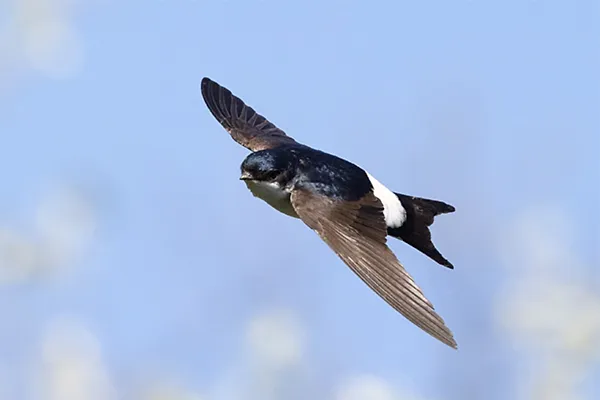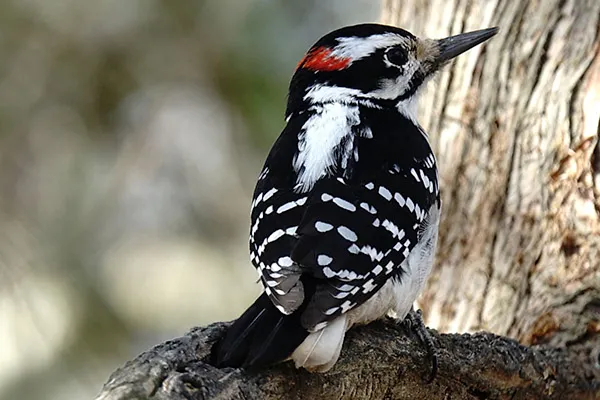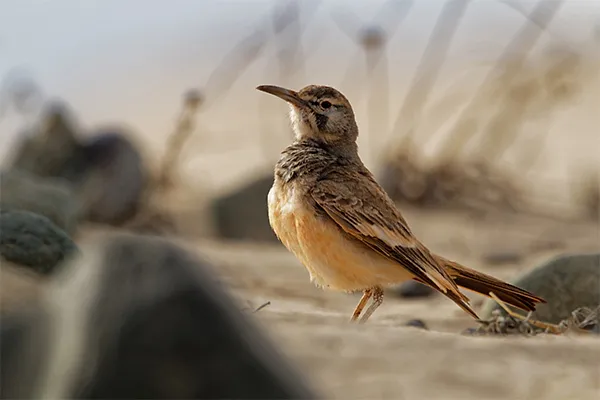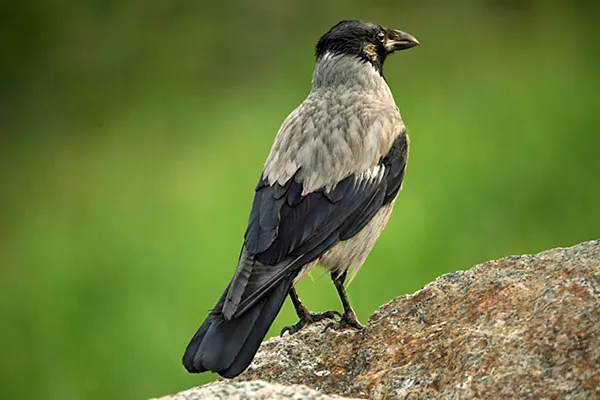List of Birds That Start With H
We discover unique and delightful surprises when we explore the world of birds. With their enchanting songs and vibrant plumages, birds are a sensory treat and can enhance our daily learning. For children, learning bird names can be a fun and educational journey. Bird names that start with the letter H, for instance, offer a wealth of options for adults and children alike. Whether you’re an ornithologist, a bird enthusiast, or a parent looking to broaden your child’s horizons, this list of H-letter bird names for preschoolers and kids is a valuable educational resource. What better way to improve kids’ vocabulary than by introducing them to the fascinating world of birds?
List of Common Birds That Start With H
Now, let’s embark on a journey into the vast and vibrant avian world, where several intriguing species catch the eye. Birds beginning with the letter H stand out for their unique characteristics and diverse habitats. In this section, we’ll look closer at these bird names with h, revealing fascinating details about each.
1. Heron
Scientific Name: Ardea herodias
Where is it Found: Wetlands, lakes, rivers, and coastal regions across North America.
The heron, a tall, long-legged, wading bird, is a true marvel of nature. Often seen standing still in shallow waters or soaring overhead with its slow wing beats, it’s a sight to behold. Its long, sharp beak is perfectly adapted for catching fish, its primary food source. The great blue heron, one of the most common species, boasts a slate-grey body with a white head crowned by black stripes. Its wingspan can be impressive, reaching up to six feet or more in some cases.
Interesting Facts:
- Herons have a unique joint in their neck that allows them to strike quickly, like a spring, to catch prey.
- Despite their size, they are relatively light because their bones are hollow.
- Herons often use their feet to stir the water and scare fish into moving, making them easier to catch.
- They are solitary feeders and can stand in one spot for several hours waiting for their prey.
2. Hawk
Scientific Name: Buteo jamaicensis
Where is it Found: Various environments across North and South America, depending on the species.
Hawks are powerful birds of prey known for their sharp talons and keen eyesight. They have a robust body and broad wings, which allow for soaring. Their diverse diet can include smaller birds, rodents, insects, and even small mammals. Depending on the species, hawks can vary in size and colouration, but they generally have a similar body shape, with broad wings and a short tail.
Interesting Facts:
- Hawks have a vision that is up to 8 times more acute than that of humans.
- They play an important role in controlling the population of harmful pests.
- Hawks are known for their distinctive screeching call, especially during mating season.
- Their courtship ritual often involves breathtaking aerial displays.
3. Hummingbird
Scientific Name: Trochilidae
Where is it Found: Across the Americas, from Alaska to Tierra del Fuego, primarily in tropical regions.
Hummingbirds are one of the smallest birds, with most species measuring only 3-5 inches long. They are known for their iridescent colours and rapid wing beats, which allow them to hover in mid-air. These birds are equipped with a long, slender bill that aids in extracting nectar from flowers, their primary food source. Their rapid metabolism requires them to eat frequently, every day.
Interesting Facts:
- Hummingbirds can flap their wings up to 80 times per second.
- They are the only birds that can fly both forward and backwards.
- Many species of hummingbirds are migratory, with some travelling up to 2,000 miles during migration periods.
- Their incredible memory helps them remember every flower they’ve visited.
4. Hoopoe
Scientific Name: Upupa epops
Where is it Found: Across Europe, Asia, and North Africa in open and partially wooded areas.
The Hoopoe is a colourful bird characterised by its distinctive “crown” of feathers. It has a long, tapering bill that it uses to forage for insects on the ground. The body is mainly pinkish-brown, with bold black and white stripes on the wings and tail. When in flight, its broad wings give it a butterfly-like appearance.
Interesting Facts:
- The Hoopoe’s crown can be erected when the bird is alarmed or excited.
- It is known for its “oop-oop-oop” call, which gives it its name.
- In many cultures, the Hoopoe is considered a symbol of virtue and wisdom.
- They are excellent at catching pests and are thus beneficial to agriculture.
5. House Finch
Scientific Name: Haemorhous mexicanus
Where is it Found: Throughout North America in urban and suburban areas, forests, and deserts.
The house finch is a small bird with a conical bill and a notched tail. Males are brightly coloured with red around the face and chest, while females are generally brown-streaked. These birds are often found around human habitation and have adapted well to urban living. They primarily feed on grains, seeds, and fruits.
Interesting Facts:
- House finches were originally a western bird but were introduced to the eastern parts of North America in the 1940s.
- Males use their bright colours to attract females during mating season.
- Their song is a cheerful, lively series of notes and trills.
- House finches can have several broods in one year, especially in warmer climates.
6. Honeyeater
Scientific Name: Meliphagidae
Where is it Found: Throughout Australia, Papua New Guinea, and Indonesia, especially in forested areas.
Honeyeaters are a diverse group of birds named for their affinity for nectar. They come in various sizes and colours but are generally slender, with curved bills adapted to accessing flower nectar. Their tongues have a brush-like tip that helps them extract nectar efficiently. Many honeyeaters also eat insects and fruit.
Interesting Facts:
- The size and shape of a honeyeater’s beak can indicate its primary food source.
- They play an essential role in pollination as they move from flower to flower.
- Some honeyeaters exhibit territorial behaviour, defending prime feeding areas from intruders.
- Their songs and calls are varied, often reflecting their habitat and diet.
7. Himalayan Monal
Scientific Name: Lophophorus impejanus
Where is it Found: In the Himalayan regions of India, Nepal, and Tibet, particularly in high-altitude forests.
The Himalayan Monal, also known as the Impeyan Monal, is renowned for its striking iridescent colouration. It is the national bird of Nepal. Males display vibrant green, blue, purple, and gold hues, while females are more subdued in brown and white. The bird has a stout bill and a prominent crest that add to its distinctive appearance.
Interesting Facts:
- This bird is named after Lady Mary Impey, the wife of British chief justice Sir Elijah Impey.
- The Himalayan Monal’s vibrant colours can change depending on the angle of light.
- They are considered sacred in several Himalayan cultures.
- Despite their bright colours, they can be hard to find in their natural habitat due to their shy nature.
8. Hawfinch
Scientific Name: Coccothraustes coccothraustes
Where is it Found: Throughout Europe and Asia in deciduous forests, orchards, and parklands.
The Hawaiian Hawkfinch is a robust bird with a powerful conical bill. It uses this bill to crack open hard seeds, especially cherry and plum stones. Hawfinches are generally brown, with a distinct black eye mask and striking black and white wing patterns. They are often elusive and difficult to observe in their natural habitats.
Interesting Facts:
- The bill of a hawfinch can exert a pressure of around 50 kilograms to crack hard seeds.
- They are among the most powerful finches when it comes to bill strength.
- Their flight is fast with a bounding pattern.
- Hawfinches often forage on the ground, searching for fallen seeds and fruits.
9. Hammerkop
Scientific Name: Scopus umbretta
Where is it Found: Throughout sub-Saharan Africa in wetlands, marshes, and along rivers.
The Hammerkop is a medium-sized wading bird with a unique hammer-shaped head, which gives it its name. It has brown plumage and a slightly crested head. Hammerkops are known for building massive nests, sometimes over a meter across, using various materials, including mud, sticks, and bright objects like clothes.
Interesting Facts:
- Hammerkop nests can weigh up to 50 kg.
- They have a peculiar habit of parading in groups, raising their crests, and fluffing their feathers.
- Hammerkops are the subject of various myths and superstitions in African cultures.
- They often feed on frogs, fish, and small crustaceans.
10. Hornbill
Scientific Name: Bucerotidae
Where is it Found: Across Africa and Asia in tropical and subtropical forests.
Hornbills are characterised by large, often colourful bills and sometimes by a casque – an upward bill extension. These birds vary in size, but they all have strong, broad wings and a tail that aids in their agile flight through forest canopies. They primarily feed on fruits, insects, and small animals. The casque’s function varies among species, serving as a resonating chamber, a display feature, or for physical combat.
Interesting Facts:
- Some species of hornbills practice a unique nesting ritual where the female seals herself inside a tree cavity, leaving only a tiny slit, and relies on the male to feed her.
- Hornbills are well known for their loud calls, which can resonate through the forest.
- They play a vital role in their ecosystem by dispersing seeds.
- The helmeted hornbill’s casque is solid and has been hunted for its “red ivory.”
11. Harrier
Scientific Name: Circus
Where is it Found: Throughout the world, especially in open habitats like meadows, marshes, and grasslands.
Harriers are medium-sized birds of prey with long wings and tails. They have a distinct flight pattern and are often seen gliding low over open grounds, searching for prey. Harriers primarily feed on small mammals, birds, and insects. They possess an owl-like facial disk, which helps direct sound to their ears and detect prey.
Interesting Facts:
- Female harriers are generally larger and differently coloured than males, a phenomenon called sexual dimorphism.
- Harriers have been known to practice polygyny, where one male mates with several females.
- Their nests are typically built on the ground.
- The marsh harrier, a common species, underwent a significant decline but has seen recovery due to conservation efforts.
12. House Martin
Scientific Name: Delichon urbicum
Where is it Found: Throughout Europe, Asia, and parts of Africa, primarily near human settlements.
The house martin is a small, agile bird with glossy blue-black upperparts and pure white underparts. It has a distinctive white rump and a forked tail. House martins are known for their acrobatic flight as they catch insects mid-air. They build mud nests, often under the eaves of buildings, which gives them their name.
Interesting Facts:
- House martins are migratory birds, travelling vast distances between breeding and wintering grounds.
- They often return to the same nesting sites year after year.
- Other bird species sometimes use the mud nests they build.
- In some cultures, having a house martin nest on one’s property is a sign of good luck.
13. Hairy Woodpecker
Scientific Name: Picoides villosus
Where is it Found: Throughout North America, in forests, woodlands, and suburban areas.
It is a medium-sized woodpecker with characteristic black and white plumage and a distinctive undulating flight pattern. Males have a small red patch on the back of their heads. Their strong bill is used to peck at tree bark, searching for insects.
Interesting Facts:
- Their drumming sound can be heard from a distance and is used for communication and marking territory.
- Hairy woodpeckers have a unique bone structure that acts as a shock absorber, preventing brain injury while they drum.
- They are often confused with the downy woodpecker, but the hairy woodpecker is generally larger with a longer bill.
- Their sticky tongue can be extended to extract insects from tree crevices.
14. Hoopoe Lark
Scientific Name: Alaemon alaudipes
Where is it Found: Throughout North Africa and the Middle East, particularly in desert and semi-desert regions.
The Hoopoe Lark is a medium-sized bird with a slender build and long legs, adapted to its desert habitat. It possesses a unique combination of features: a long, curved bill reminiscent of a hoopoe and the overall body shape of a lark. Their sandy-coloured plumage helps them blend seamlessly into their arid surroundings. These birds are ground-dwellers and are often seen running swiftly on the sand.
Interesting Facts:
- The Hoopoe Lark can mimic the calls of other bird species and even some insects.
- They are superbly adapted to the desert heat, and their body temperature can safely rise to levels fatal for most other birds.
- During sandstorms or the day’s heat, they burrow into the sand for protection.
- Their diet includes insects, seeds, and occasionally small vertebrates.
15. Hooded Crow
Scientific Name: Corvus cornix
Where is it Found: Across Northern and Eastern Europe and parts of the Middle East, in a variety of habitats including forests, fields, and urban areas.
The Hooded Crow stands out with its contrasting grey body and black head, wings, and tail. Similar in size and shape to the more widespread carrion crow, this bird is known for its intelligence and adaptability. Often seen scavenging or foraging, it feeds on various items, from insects to fruits and human leftovers.
Interesting Facts:
- Hooded Crows are known for their problem-solving abilities and have been observed using tools.
- They are often associated with folklore and are considered harbingers in some cultures.
- Like other corvids, they have a complex social structure and can form alliances.
- Their vocalisations are varied, and they can mimic the sounds of other birds and animals.
Other Birds Beginning With H
Birdwatchers and enthusiasts often marvel at the vast diversity of avian species worldwide. When focusing specifically on birds whose names start with the letter h, the list continues to be impressive. Here’s a collection of other noteworthy birds; start with the letter h that showcases the vast array of species beginning with this letter:
- Himalayan Bulbul
- Hawaiian Hawk
- Hooded Oriole
- Horned Grebe
- Hawaiian Honeycreeper
- House Wren
- Hutton’s Vireo
- Hooded Merganser
- Hooded Warbler
- Himalayan Swiftlet
- Hume’s Warbler
- Hermit Warbler
- Harris’s Hawk
- Hwamei
- Hooded Pitta
- Hartlaub’s Gull
- Heuglin’s Gull
- Hill Myna
- Henderson’s Ground Jay
- Himalayan Griffon
- Horned Lark
- Hill Partridge
- Humboldt Penguin
- Harris’s Sparrow
- Horned Puffin
- Hawfinch
- Henslow’s Sparrow
- Honey Buzzard
- Hairy-breasted Barbet
- Hill Blue Flycatcher
- Harpy Eagle
- Helmeted Guineafowl
- Hadada Ibis
- Humboldt’s Sapphire (a hummingbird species)
- Hooded Vulture
- Himalayan Rubythroat
- Hill Swallow
- Hawaii Elepaio
- Heermann’s Gull
- Horned Sungem
- Harlequin Duck
- Hermit Thrush
- Himalayan Accentor
- Harlequin Quail
Whether birdwatching in a specific region or simply expanding their knowledge, it is challenging and rewarding to identify a bird that starts with the letter h from this extensive list. As with all species, each plays a crucial role in maintaining ecological balance and showcases Mother Nature’s splendid variety.
FAQs
1. Are there any endangered birds that start with the letter ‘h’?
Yes, several birds beginning with ‘h’, such as the Hawaiian Honeycreeper and the Harpy Eagle, are currently listed as endangered or vulnerable due to various factors, such as habitat loss and human interference.
2. How can I attract hummingbirds to my garden?
Planting nectar-rich flowers, setting up hummingbird feeders filled with sugar water, and providing perching spaces can attract hummingbirds to your garden.
3. What’s the significance of the ‘h’ in ‘Hoopoe’?
The name ‘Hoopoe’ is onomatopoeic, derived from its distinctive call, which sounds like “hoop-hoop-hoop”.
4. Do all birds with names starting with ‘h’ have similar habitats?
No, birds beginning with the letter ‘h’ are found in diverse habitats worldwide, from deserts to forests to urban areas.
Birds beginning with the letter ‘h’ offer a captivating glimpse into the diverse world of avian species, each with unique characteristics, habitats, and behaviours. Their beauty, intriguing behaviours and vital ecological roles underscore the importance of conserving and appreciating the natural world around us.
Birds Names That Begin With (A to Z)
| A | B | C | D | E | F | G | H | I |
| J | K | L | M | N | O | P | Q | R |
| S | T | U | V | W | X | Y | Z |
Was This Article Helpful?
Parenting is a huge responsibility, for you as a caregiver, but also for us as a parenting content platform. We understand that and take our responsibility of creating credible content seriously. FirstCry Parenting articles are written and published only after extensive research using factually sound references to deliver quality content that is accurate, validated by experts, and completely reliable. To understand how we go about creating content that is credible, read our editorial policy here.





